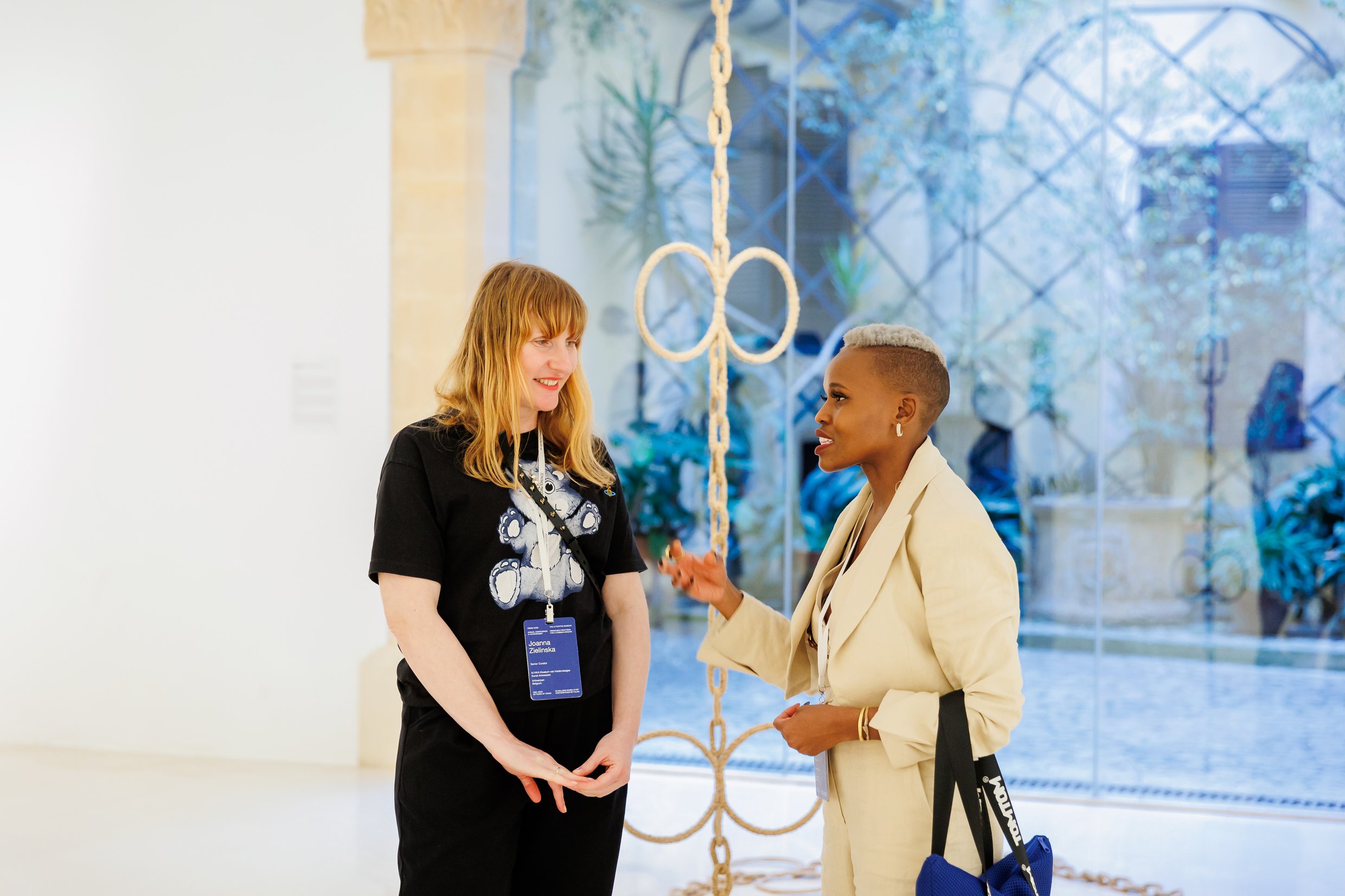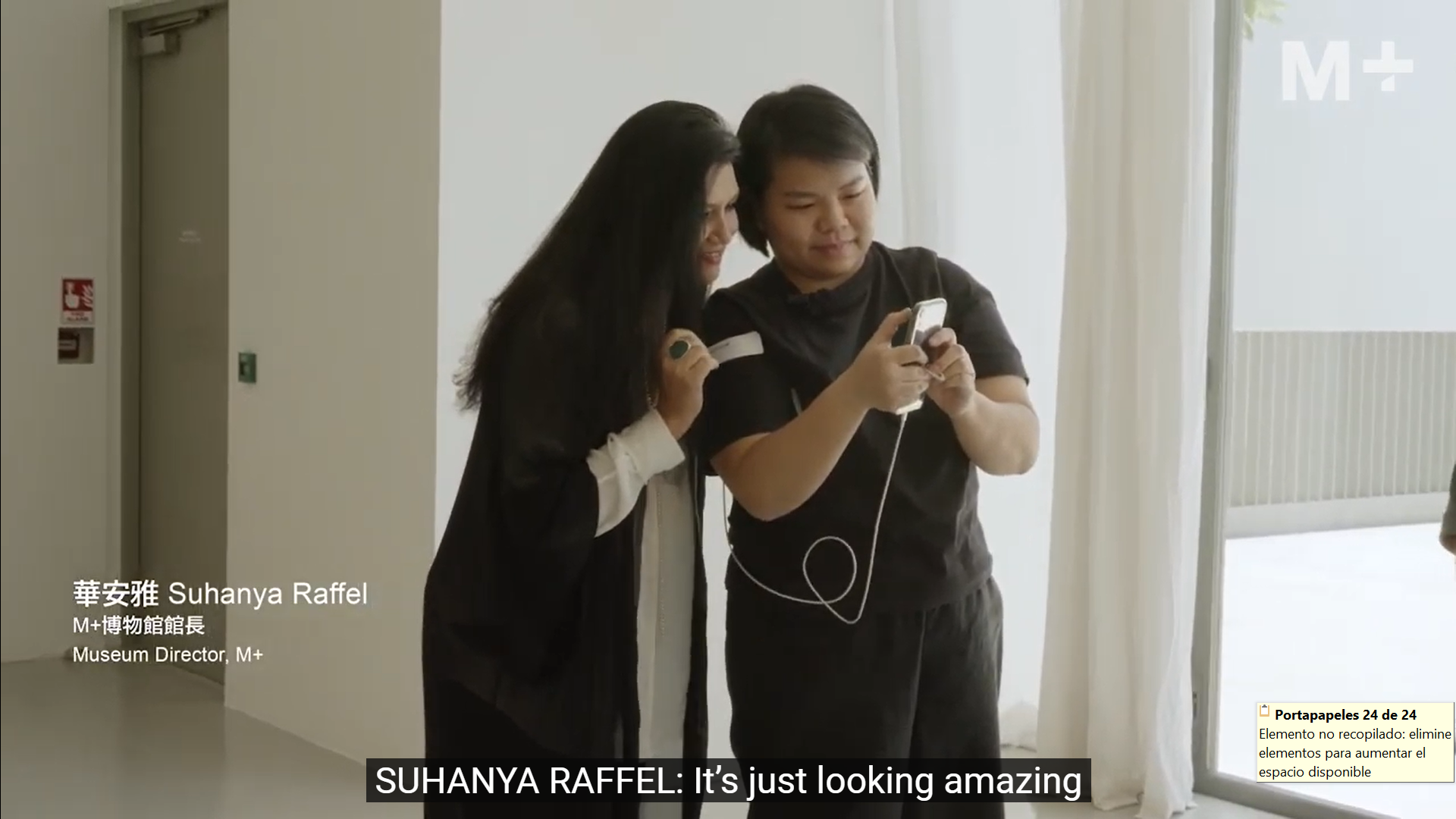The environmental aspect of sustainability

(1) Examples of Immediate Actions
This section collates a series of actions and solutions that are currently being implemented in the museums and curatorial projects of CIMAM members and the professionals who took part in the survey conducted by CIMAM in 2022 titled "Climate, Social, and Economic Sustainability: How Modern and Contemporary Art Museums Act to Achieve the Sustainable Development Goals."
The environmental aspect of sustainability: climate justice and awareness, emissions and waste reduction, and responsible consumption.
RESPONSIBLE CONSUMPTION AND PRODUCTION
EXHIBITIONS AND PROGRAMS
- Extend the duration of exhibitions to over 3 months and a half or even longer. Sensitive works from a conservation perspective are discussed separately.
- Greater focus on local artists and works from the collection.
- Use virtual couriers. And analyze in each case which is the most suitable transport for the artwork and the environment.
- Plan for international exhibitions to be installed remotely, without the artists and external curators.
- Reusable exhibition furniture, such as display cases and frames, reusing walls from previous exhibitions, developing modular temporary walls, and reusing wooden flooring employed to protect during the installation.
- List the stored items, create guidelines for exhibition designers regarding which materials could be used, non-toxic, recyclable, or reusable, etc.
- Offer workshops and training programs to help foster awareness of the need to protect our environment.
- Produce virtual materials for families, learners, the disabled, and everyone to access online.
- Use virtual couriers. And analyze in each case which is the most suitable transport for the artwork and the environment. Reducing the art world’s dependency on air freight forms a central plank of the GCC’s Sustainable Shipping Campaign.
- Raise awareness of the role of tourism in bringing potential benefits to sustainable development and environmental protection and restoration, and recognize that tourism is also a substantial environmental cost of museums that needs to be addressed.
- Schedule traveling exhibitions and educational programs in rural and regional areas, including those of low socioeconomic status.
- Support artistic and research projects that address environmental issues and harness the potential of museum collections to conduct research that helps to understand, protect and restore nature and to make informed decisions.
SUSTAINABLE CITIES AND COMMUNITIES
MUSEUM STAFF
- Hire staff to work remotely, including research and viewing of artworks for acquisition.
- Involve all museum staff and departments in all stages of the planning and executing of the Sustainability Plan.
- Provide training to your staff, consulting experts, and commissioning professional reports.
- Obtain certificates to rate the environmental sustainability performance of your programs, operations, and building management.
- Apply for grants that support environmental operational changes and the production of environmental-related programs.
- Promote international days as a way of working together to help museums connect people to broader initiatives and familiarize them with the “big picture.”
- Raise awareness of First Nations and their cultural practices, in which care of the countryside is central.
- Recognize that different social groups will be affected differently by environmental challenges and contribute to environmental restoration in various ways to engage more people in meaningful activities to care for and restore the environment.
- Everyday life in museum practice must resonate with the museum’s ethical and sustainable values for visitors to perceive their relevance.
- Ensure that environmental actions also deliver social and economic benefits to avoid trade-offs.
CLIMATE ACTION
OPERATIONS AND BUILDING EFFICIENCY
- Establish a responsible policy for the use of administrative consumables. Develop clear visions, targets, and metrics on the expected outcomes of museum-related environmental actions to drive ambition and accountability.
- Establish a low-print policy with a move to digital communication, including reports for Councils and Ministries.
- Set an example of a green economy by integrating sustainability into the core of the museums’ strategy and be systematic in the actions and objectives to be achieved.
- Print only the essentials. If you print, do it double-sided.
- Reduce printed promotional materials such as leaflets, postcards, invitations, etc.
- Rethink publications formats. E-catalogs, for example, can be purchased online.
- Make inventories of the types of paper used and choose the most environmentally respectful.
- If you print, use Km0 printers (incurring no flights) using eco ink and recycled paper.
- Establish an internal waste-sorting guide.
- Convert the lighting system to LED.
- Install photovoltaic panels in your building.
- Composting, also by the restaurant and café.
- Install solar energy, wastewater reclamation, and review air conditioning levels to reduce energy consumption.
- Increase Km0 products and vegetarian options in your restaurant and café.
- Zero plastic. Including replacing plastic garbage bags with ecological ones.
- Use tap water instead of bottled – in the museum, restaurant, and café. If tap water is not possible, then build a safe water supply to reduce the number of plastic bottles.
- Use regular cups instead of paper or plastic cups. Zero waste.
- Create bicycle parking to encourage museum staff and visitors to cycle.
- Partner with like-minded museums and venues to share and reuse resources.
- Work in alliance with public and private entities that may help you in realizing your green mission and promote environmental awareness.
- Install a rainwater tank to water the green areas surrounding the museum.
- Review the irrigation circuits for the venue's green areas. Ensure they are controlled and adequate. consumption of water according to the season.
- The most effective way to reduce waste is to not create it in the first place.
- Raise awareness of the amount of waste generated by an exhibition, the materials used, and their possible reuse. Move from raising awareness to inspiring hope in people and showing them ways to campaign for a more equitable economic system and become responsible consumers.
- Create lists of resources and questions to ask when planning projects and programs to ensure sustainability in these events whenever possible.
- Obtain green certificates to guide museums toward ongoing development.

Due to the COVID-19 pandemic, artist Shirley Tse and guest curator Christina Li were unable to travel to Hong Kong for the installation at M+ of Shirley Tse: Stakes and Holders. The exhibition was installed through extensive dialogue across three different time zones – between the artist in Los Angeles, the guest curator in Amsterdam, and the curatorial and installation team in Hong Kong. Watch the full video here.

Another example is artist Phyllida Barlow's virtual installation for Another Energy: Power to Continue Challenging exhibition at Mori Art Museum where both the artist and curators (Mami Kataoka and Martin Germann) worked remotely.

The Museo de Arte Moderno de Buenos Aires, Argentina has extended the length of the exhibitions according to their size:
Major Exhibitions (800–1200m2) used to last 7 months, from 2020 onwards they last 1 year.
Medium Exhibitions (400–800m2) last an average of 6–7 months.
Small or Project shows (80m2) of younger artists or research projects usually last 3–6 months.
Check IHME’s immediate actions implemented in their venue and operating models to lower down carbon emissions. “Carbon handprint” or “green handprint” refers to the climate benefits or the emissions avoided by using a product, process, or service. It can be created by a state, company, association, or individual human being. For example, when a company generates a carbon handprint for a customer, the customer can reduce his/her own carbon footprint. The handprint emphasizes positive future effects on emissions, whereas the carbon footprint focuses on the current negative effects of emissions.